08 September 2023
We Tell Their Stories: Beyond the Pitch with the Rugby Stars of the World Wars
We Tell Their Stories: Beyond the Pitch with the Rugby Stars of the World Wars
With the players ready to run out for the 2023 Rugby World Cup, we share the stories of Rugby players who fought and fell on the battlefields of the World Wars.
Rugby players in the World Wars

Photo: (© IWM Q_002684)
Rugby, much like cricket and football, has a huge following in many Commonwealth nations.
The sport has been popular since its late Victorian-era inception in the UK and soon spread through the British Empire.
In fact, the Commonwealth nations of South Africa, New Zealand, and Australia are widely recognised as rugby union powerhouses.
From amateur rugby union players to professional rugby league code practitioners, rugby players fought in the armies of the Commonwealth across both World Wars.
The game’s qualities and ideals of courage, physical prowess, passion, and camaraderie are attributes that apply to soldiers’ frontline duties too. Rugby players could, theoretically, adapt to military life.
The eight rugby nations suffered the tragic loss of many rugby stars. Some are considered legends of their national teams and the game as a whole.
From England, Scotland, Wales, Ireland, South Africa, Australia, and New Zealand, 185capped international rugby players lost their lives in the World Wars. Far too many club and amateur players died for us to accurately count, but they are commemorated eternally by Commonwealth War Graves.
Here, we shine a spotlight on several notable rugby players who died during the World Wars. It’s our mission to keep their stories alive so their memories are preserved for future generations.
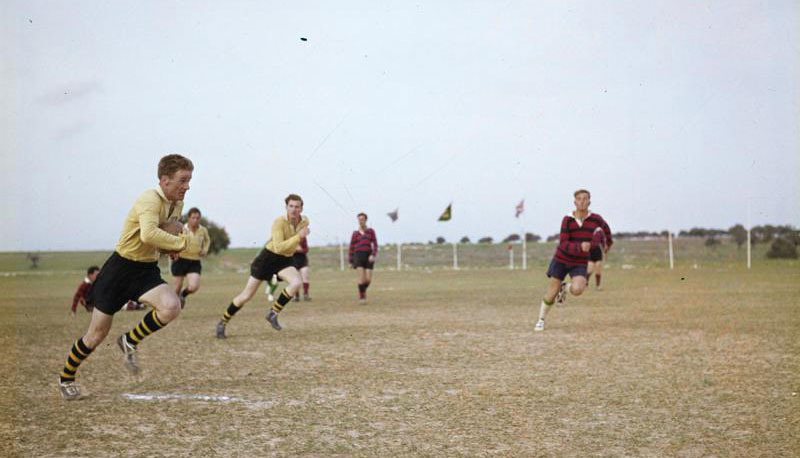
Download your free PDF guide to the resting places of these remarkable rugby legends. Discover their stories and go interactive with Memory Anchor: an augmented reality app that enhances their stories. Download your copy now.
Get your PDFWe'd love to stay in touch
Sign up to our mailing list and we'll send you the latest on Commission news and events around the world.
Rugby casualties of the World Wars

Serjeant David Gallaher
New Zealand Rugby International 1903-1906
An icon of New Zealand rugby to this day, David Gallaher was born in Ramelton, County Donegal, Ireland, on 30 October 1873. He emigrated with his family to New Zealand at the age of 5.
In 1890, David joined Parnell RFC, a junior rugby team, and made a name for himself. Five years later, he joined Auckland’s best-known club, Ponsonby RFC, where his reputation grew. His athletic physique and height of 6 feet made him a particularly tall forward for his time. He stayed with the Aucklanders for 13 years.
In 1901, he lied about his age to take part in the Boer War with the 6th New Zealand Contingent of Mounted Rifles. His unit was involved in skirmishes in which David refused to fire on the Boers, instead volunteering to collect the wounded.
His international rugby career began on 15 August 1903, with a third-row position with the All Blacks. He went on to become captain in 1905, and in 1908 he coached Ponsonby RFC and the New Zealand international team.
In 1916, during the First World War, David volunteered to serve with New Zealand forces, aged 40.
He arrived in Europe in May 1917 as part of the 2nd Auckland Regiment and was sent to the front in Belgium. On 4 October 1917, during the Battle of Passchendaele, he was wounded in the head, and died later that day.
David is buried at Nine Elms British Cemetery, Poperinge, Belgium (Plot III, Row D, Grave 8).
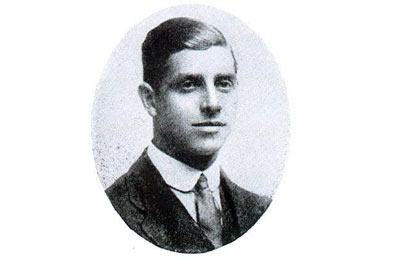
Second Lieutenant Eric Milroy
Scotland Rugby International 1910-1914
Eric Milroy was born in Edinburgh on 4 December 1887. He studied maths at Edinburgh University and went on to work as a chartered accountant.
He played rugby at school, university and was then selected to play for the Watsonian Rugby Football Club. Between 1908 and 1914, the Watsonians won the Scottish Club Championship five times, and remained unbeaten in the 1909-1910 season, in part thanks to Milroy’s strong performances in the scrum.
He was first capped for Scotland as scrum half against Wales on 5 February 1910. He played for Scotland a total of 12 times, including twice as captain in 1914.
Just a few months before the First World War broke out, he played his last match against England in February 1914 as captain of the team.
Upon the outbreak of war in September 1914, Eric volunteered to serve and fought with the 8th Battalion of the Black Watch. He was killed in action on 18 July 1916 during the Battle of the Somme.
He has no known grave and is commemorated on the Thiepval Memorial (Pier 10 and Face A).
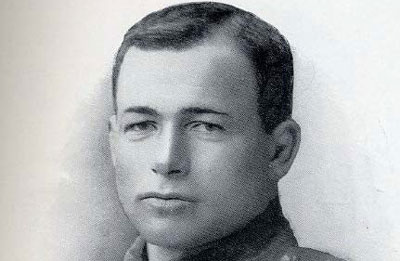
Lance Corporal John Abbott King
England Rugby International 1911-1913
John Abbott King was born on 21 August 1883 in Burley in Wharfedale, North Yorkshire. He was educated at Giggleswick School, where he first played rugby.
John went on to live in South Africa, where he played for Durbanville Rugby Club in the early 1900s, and then for Strand Somerset West Rugby Club.
Returning to England in 1906, he became a farmer, but continued his love of rugby, playing with Headingley, a Leeds-based team.
Standing only 5ft 6in, and with a muscular build he earned the nickname “Pocket Hercules”. He played numerous matches (46) with the Yorkshire County team, as well as with the renowned Barbarians (4).
John began his international career in February 1911 and was capped for England. He took part in the Five Nations Championships in 1911, 1912 and 1913, and was part of the team which won a brilliant victory over France in 1911 (37-0 for England).
In total, he was selected 12 times at international level.
Upon the outbreak of the First World War, John volunteered to serve, leaving his sisters to look after the family farm. Some of his fellow rugby players helped them with the harvest.
John was killed on 9 August 1916 during the Battle of the Somme. In a letter written just before going into battle, he wrote: “So long as I don’t disgrace the old Rugby game, I don’t think I mind”.
John has no known war grave and is commemorated on the Thiepval Memorial (Pier and Face 1 D 8 B and 8 C).
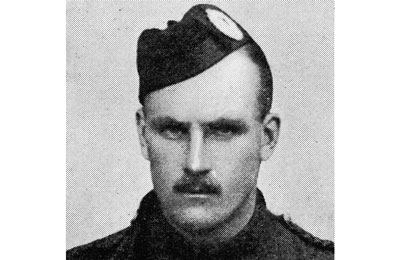
Captain Lewis Robertson
Scotland Rugby International 1908-1914
Lewis Robertson was born in Edinburgh on 4 August 1883. He was educated at Cargilfield Preparatory School, went on to study at Fettes College and received his military training at the Royal Military College, Sandhurst.
After graduating with honours, Lewis joined the Queen’s Own Cameron Highlanders in 1903.
In parallel, Lewis played at amateur level for the Fettesian-Lorettonian Club, London Scottish, Monkstown, Edinburgh Wanderers, United Services Portsmouth, and at District level with the Edinburgh District Team.
Lewis also played at Sandhurst Academy and took part in the annual Army-Navy game from 1909 to 1914. That same year, he was appointed captain of the Army XV but gave up the title as he did not feel fit enough to take on the role.
During this time, he was selected for the Scottish national team 9 times between 1908 and 1913. When the First World War broke out, he was recalled to the depot in Inverness before being briefly stationed in Aldershot. In September 1914, his regiment was sent to France to fight on the Aisne.
On 2 November 1914, while in the trenches at Ypres in Belgium, Robertson was wounded in the arm.
After receiving medical treatment, he was seriously wounded a second time whilst returning to his men. Taken back for medical care he died in hospital the following day.
Captain Lewis Robertson is buried in Ypres Reservoir Cemetery, (Plot II. Row R. Grave 4).
Image: (© IWM HU_125046)
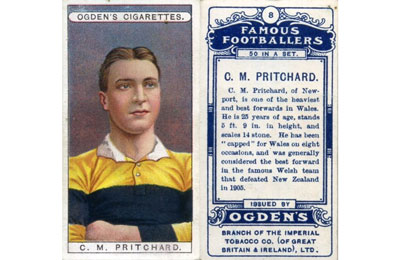
Captain Charles Meyrick Pritchard
Wales Rugby International 1904-1910
Charles was born on 30 September 1882 in Newport, into a sporting family. His father, John Pritchard, was one of the founders of Newport Rugby Club.
Charles started playing rugby in England when he boarded at Long Ashton School, Bristol.
After his studies, Charles went on to work in the family wine and spirits business. At nineteen, he was invited to play rugby for Newport, where he captained the team for three consecutive years and took part in more than 200 matches between 1902 and 1911.
A formidable tackler, a solid and dynamic forward, Charles is regarded as one of the best Welsh players of his generation. He won a total of fourteen caps for Wales, including a selection in the famous "Match of the Century" against the touring All Blacks in 1905 and in the 1910 Home Nations Championship.
Charles was a solid pillar of the Welsh national team but was also known for his gentlemanly approach, as he never was responsible for the slightest foul during his long career.
Charles enlisted at the outbreak of the First World War and was commissioned to the 12th Battalion South Wales Borderers as a second lieutenant. In November 1915, he was promoted to Captain and arrived in France in June 1916.
On the night of 12 August 1916, he led a trench raid near Loos to capture a German prisoner. The attack was successful, but Charles was wounded twice in the process.
He was subsequently taken to No1. Casualty Clearing Station, a few miles behind the front line at Chocques. His last reported words were to ask if they had caught the 'Hun' and, on receiving a positive reply, he replied: "Well, I've done my bit". Pritchard died of his wounds at the Clearing Station on 14 August 1916.
Recommended for a Military Cross, he was awarded a Mention in Dispatches.
In a letter to his family, South African International Major Partridge (Newport and Blackheath) wrote: “He was a fine example of what a British sportsman should be and was loved by all who came into contact with him”.
Charles Pritchard is buried in Chocques Military Cemetery (Plot I. Row F. Grave 17.)
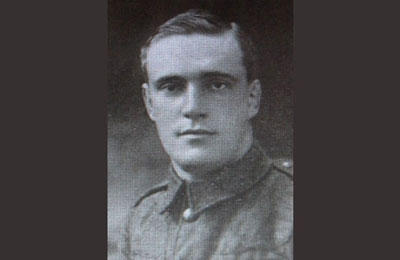
Sergeant Septimus “Sep” Heyns Ledger
South Africa Rugby International 1912-1913
Septimus Heyns Ledger, ‘Sep’, was born on 29 April 1889 in Kimberley, South Africa. He was educated at Kimberley High School, Griqualand West, which had a tradition of bringing up talented rugby players. Septimus was able to develop his skills there and played lock.
After finishing school, Septimus went on to work as a clerk for the De Beers Consolidated Mines, an international company specialising in the diamond trade. He also began to play rugby with the Pirates Rugby Football Club with which he won the Grand Challenge Shield in 1909, 1911 and 1914. In 1911, he won the Currie Cup, South Africa's premier rugby competition with the Griqualand West provincial team.
In 1912-1913 the South African national rugby union team toured the British Isles and France, playing against teams at regional and national levels.
Septimus Ledger was chosen to represent his country. He played in 15 matches, four of which were internationals. He made his test debut against Scotland on 23 November 1912, appearing the last time in a test against France on 11 January 1913.
Septimus never lost a test he played, and it was reported that his performance was outstanding. South Africa won all the test matches against the Home Nations and France, achieving their first Grand Slam.
At the outbreak of the First World War, he joined the 2nd Natal Orange Free State Battalion, part of the South African Brigade, deployed in the 9th (Scottish) Division. His unit arrived in France in July 1916, and he saw some heavy fighting over the next months. He was promoted to Sergeant but on 12 April 1917 during an advance to the Roeux railway station, he was among the many South Africans who were lost that day.
He has no known grave, and he is today commemorated by name on the Arras Memorial (Bay 10).
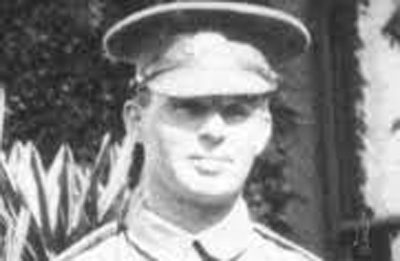
Private Herbert Jones
Australia Rugby International 1913
Herbert Jones was born in Carrington, New South Wales on 8 August 1888. He worked on the docks cutting and loading coal from an early age. He discovered rugby in his hometown and played for Newcastle, before being discovered by representative selectors at the age of 23.
Between 1911 and 1914, Herbert wore the New South Wales jersey 21 times. A centre with good pace and an eye for a gap, he quickly proved himself at home in the much higher grade of rugby and was soon one of the State’s first picks.
A dangerous attacker in his own right, it was clear that he was one of the country’s premier centres and he joined the Wallabies in 1912, notably for their disastrous international tour. He performed much better during the tour of New Zealand: he played three quarters and scored several tries, including a try in the final match, enabling Australia to win 16-5 in a historic first victory over New Zealand.
Like many of his team-mates, he enlisted in the Australian Imperial Force on 26 July 1915. He was posted to the 30th Battalion of the 5th Division and on 9 November 1915, he embarked on the Beltana. He took part in the fighting at the Battle of the Somme and was killed by a shell on 4 November 1916.
He is buried at A.I.F Burial Ground, Flers (Plot IX, Row B, Grave 4).


